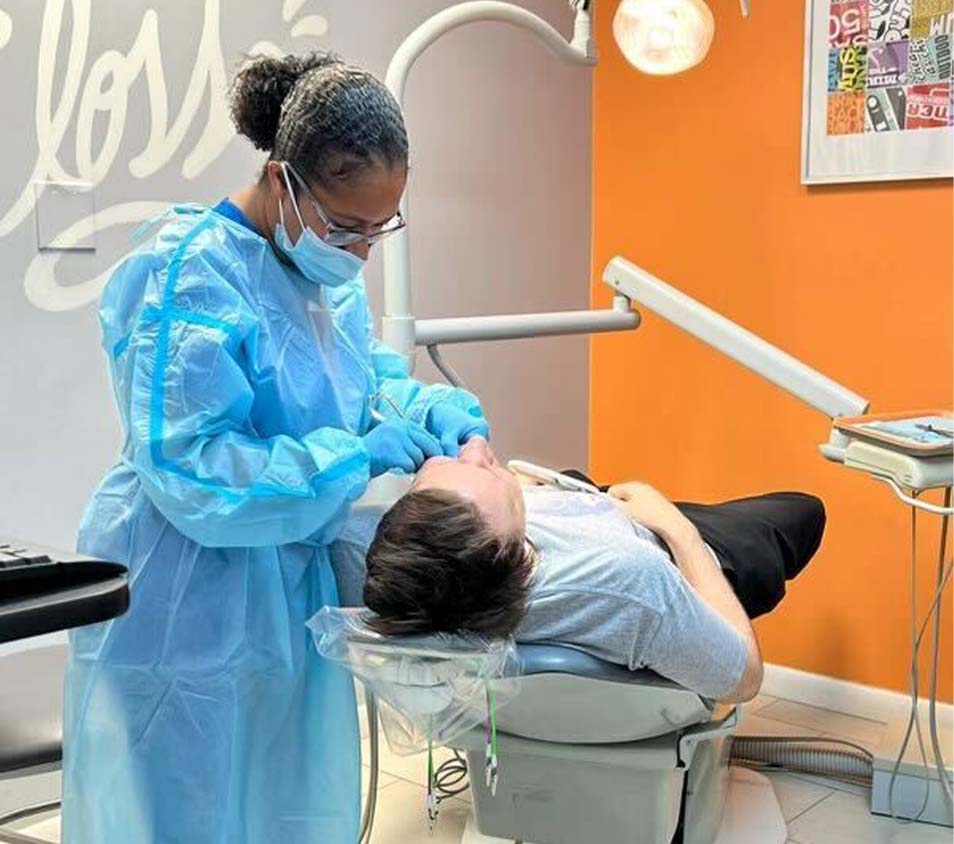The Secret to a Perfect Smile: Exploring Veneers in Washington DC
The Secret to a Perfect Smile: Exploring Veneers in Washington DC
Blog Article
Common Concerns About Dental Veneers Addressed
Dental veneers have ended up being an increasingly desired alternative for those looking to boost their smiles, yet numerous people remain unsure concerning various elements of their usage. Secret questions commonly occur relating to the application procedure, long life, and potential risks connected with these cosmetic enhancements. Furthermore, the distinction in between porcelain and composite veneers can substantially influence one's option. As we explore these common inquiries, it becomes vital to consider not just the benefits yet likewise the implications of selecting dental veneers in search of an extra positive appearance. What factors should one consider before making such a decision?
What Are Oral Veneers?
Oral veneers are thin, customized shells crafted from porcelain or composite material that are designed to cover the front surface area of teeth. These dental prosthetics serve both aesthetic and practical purposes, providing a remedy for numerous oral flaws, consisting of staining, chips, spaces, and misalignment. By adhering to the teeth, veneers can considerably boost the general look of a smile, creating a more appealing and consistent look.
Porcelain veneers are especially preferred for their natural translucency and stain resistance, making them an excellent option for people looking for durable results. In contrast, composite material veneers are typically less expensive and can be applied in a single see, however they might not provide the very same sturdiness as porcelain alternatives.
The choice to choose dental veneers often originates from a need for aesthetic renovation, but patients need to additionally think about aspects such as the durability of the product, upkeep needs, and the potential requirement for tooth decrease (Veneers). Inevitably, oral veneers stand for a versatile and effective solution for attaining a radiant smile, satisfying private aesthetic demands while advertising confidence and self-esteem
Exactly How Are Veneers Applied?
The application process for veneers calls for mindful planning and precision to make certain optimum results. The treatment commonly starts with a comprehensive consultation, where the dentist examines the individual's oral health, goes over preferred results, and figures out the appropriate sort of veneers, whether porcelain or composite resin.
As soon as the therapy strategy is developed, the dental practitioner prepares the teeth by getting rid of a thin layer of enamel, generally regarding 0.5 mm to 1 mm, to suit the veneer. This action is vital as it makes certain a proper fit and stops the veneers from appearing large - Dental Veneers. After preparation, impressions of the teeth are required to create custom-made veneers that match the person's special dental structure and aesthetic choices
While the permanent veneers are being produced in a dental research laboratory, temporary veneers might be put to protect the ready teeth. When the long-term veneers prepare, the dental professional will thoroughly bond them to the teeth making use of a solid oral adhesive. Final modifications are made to make certain proper placement and attack, adhered to by brightening for a natural look. The process finishes in a follow-up visit to monitor the veneers' fit and the person's complete satisfaction with their brand-new smile.
What Are the Benefits?

Furthermore, veneers are recognized for their resilience and resistance to staining contrasted to natural teeth. Made from top notch materials such as porcelain or composite resin, they can preserve their appearance for years with correct treatment. This longevity makes them a useful investment in one's oral look.
Along with aesthetic improvements, veneers can additionally add to improved oral health. By covering damaged or compromised teeth, they can provide additional assistance and security, helping to avoid more degeneration or deterioration. This safety aspect can minimize the need for more considerable dental procedures in the future.

For How Long Do They Last?
With correct care and maintenance, oral veneers can last anywhere from 10 to 15 years, making them a long-lasting service for enhancing one's smile. The durability of veneers greatly depends on the product used, the high quality of the preliminary positioning, and the patient's adherence to dental health techniques.
Porcelain veneers are recognized for their longevity and resistance to discoloration, commonly lasting closer to the 15-year mark when cared for properly. Composite veneers, while extra budget friendly, may need replacement sooner, commonly within 5 to one decade due to their susceptibility to wear and staining.

Additionally, putting on a mouthguard during sports or nighttime can provide extra protection. Eventually, while veneers supply a significant visual improvement, their long life is dramatically affected by the commitment to appropriate oral treatment and routine consultations with an oral professional.
Are There Any Kind Of Threats?
Taking into consideration the transformative impacts of oral veneers, it is very important to acknowledge the prospective risks linked with their application. While veneers can improve the appearance of teeth, the procedure includes the removal of a slim layer of enamel, which can increase tooth level of sensitivity and vulnerability to decay.
One significant threat is the possibility of improper placement or fitting, bring about pain, bite misalignment, or also damage to the underlying tooth structure. Furthermore, if the veneers are not preserved properly, they can end up being blemished or broken over time, demanding replacement.
Patients may likewise experience sensitive reactions to the products used in the veneers, especially if they have level of sensitivities to particular dental compounds. Additionally, while veneers are durable, they are not undestroyable; excessive pressure from squeezing or grinding can result in fractures.
It is important for patients to speak with a certified dental professional to evaluate their private dangers and to adhere to aftercare directions diligently. By understanding these threats, people can make informed choices regarding their dental veneer therapy and ensure the longevity and success of their improvements.
Conclusion
In summary, dental veneers stand for a beneficial cosmetic option for improving smiles, with factors to consider concerning their application, benefits, durability, and associated risks. Their performance is affected by aspects such as the choice of material, with porcelain offering exceptional longevity contrasted to composite alternatives. Appropriate care and upkeep are necessary to optimize the lifespan of veneers. Ultimately, notified decision-making pertaining to dental veneers can lead to satisfactory aesthetic results and enhanced oral wellness.
Dental veneers are slim, personalized shells crafted from porcelain or composite resin that are created to cover the front surface area of teeth. After preparation, impressions of the teeth are taken to develop customized veneers that match the patient's unique oral structure and aesthetic preferences.
While the permanent veneers are being produced in a dental lab, momentary veneers may be positioned to secure the ready teeth. When the permanent veneers are prepared, the dentist will thoroughly bond them to the teeth making use of a solid oral adhesive. Inevitably, informed decision-making concerning oral veneers can lead to satisfying aesthetic outcomes and enhanced oral health and wellness.
Report this page